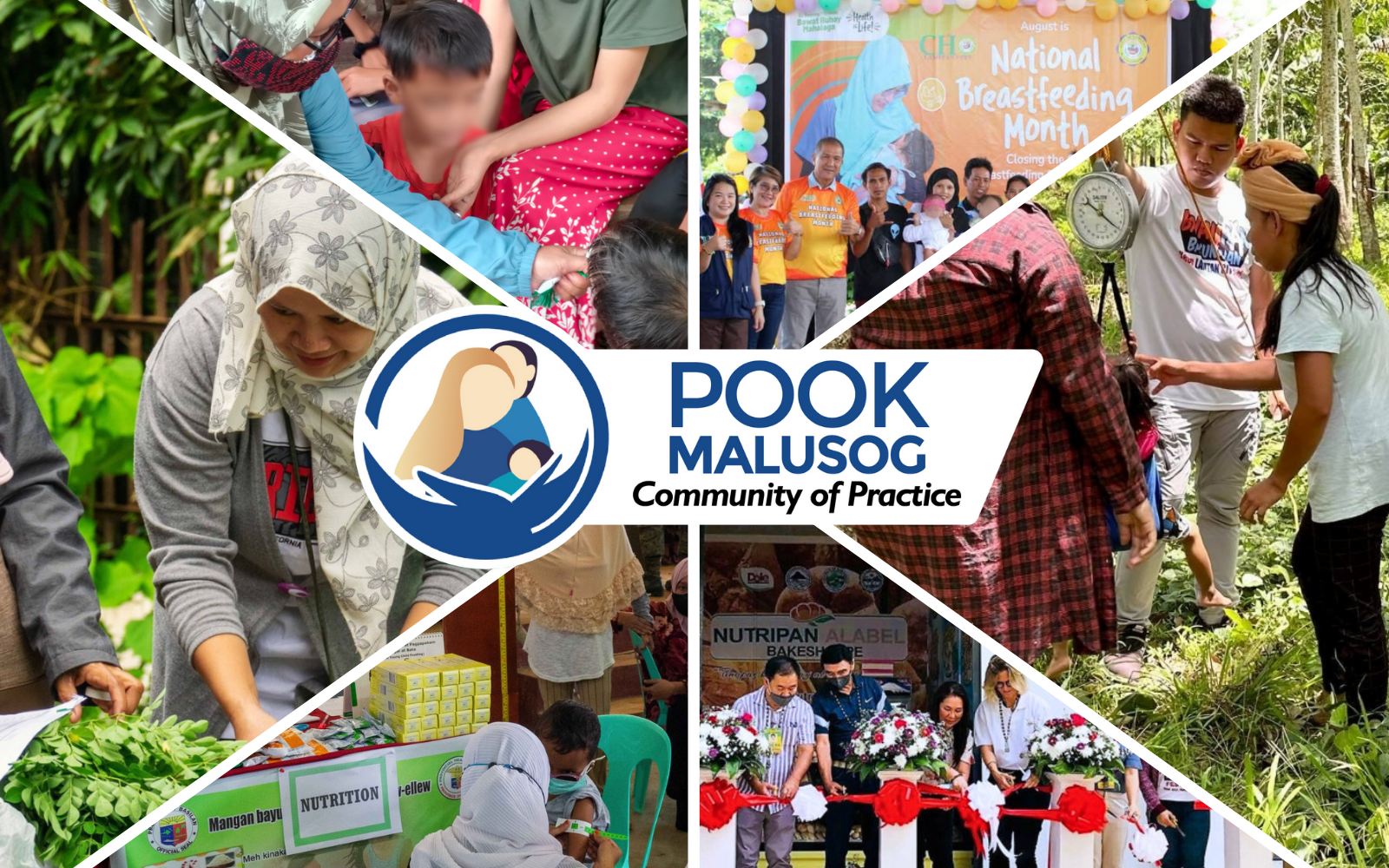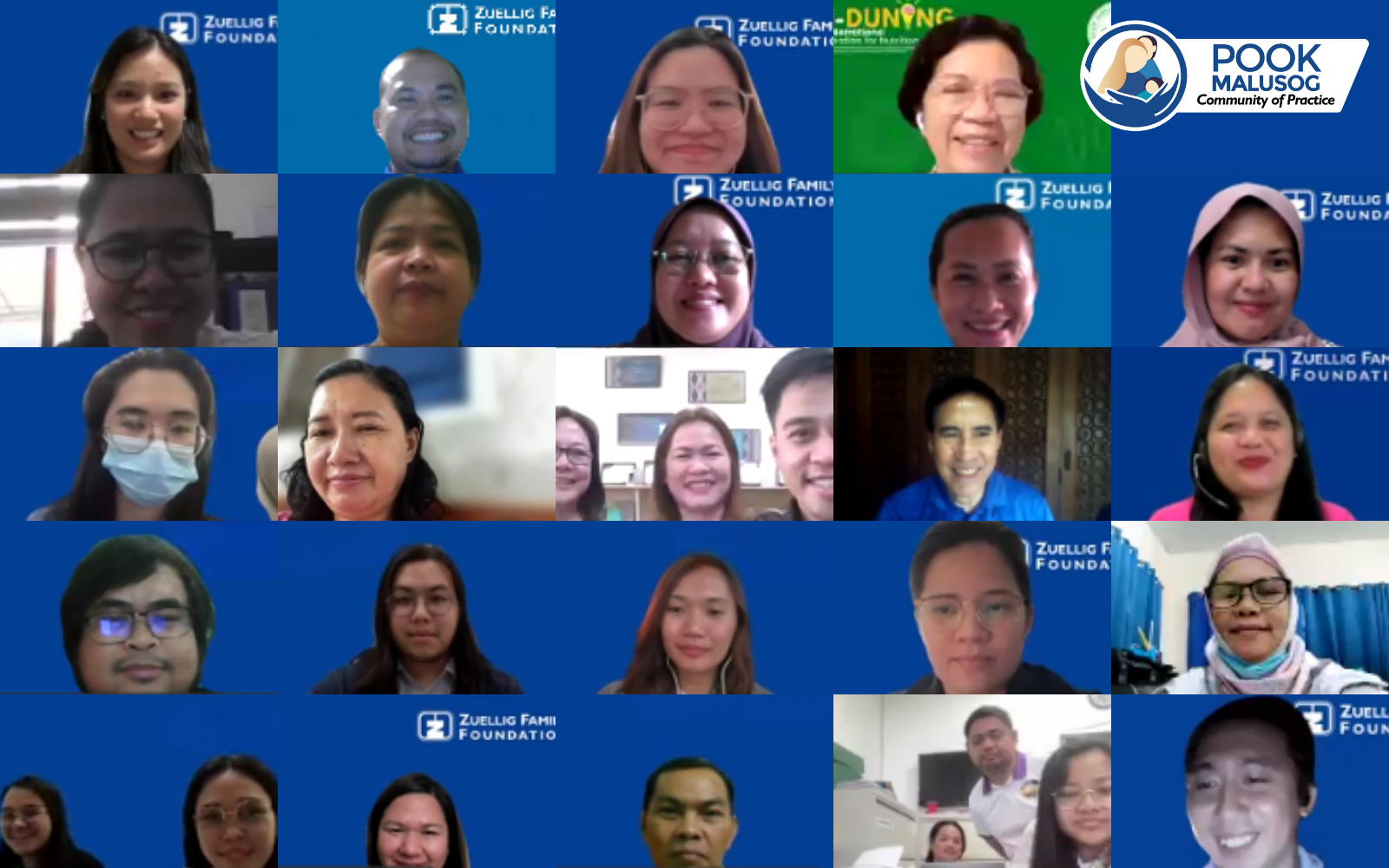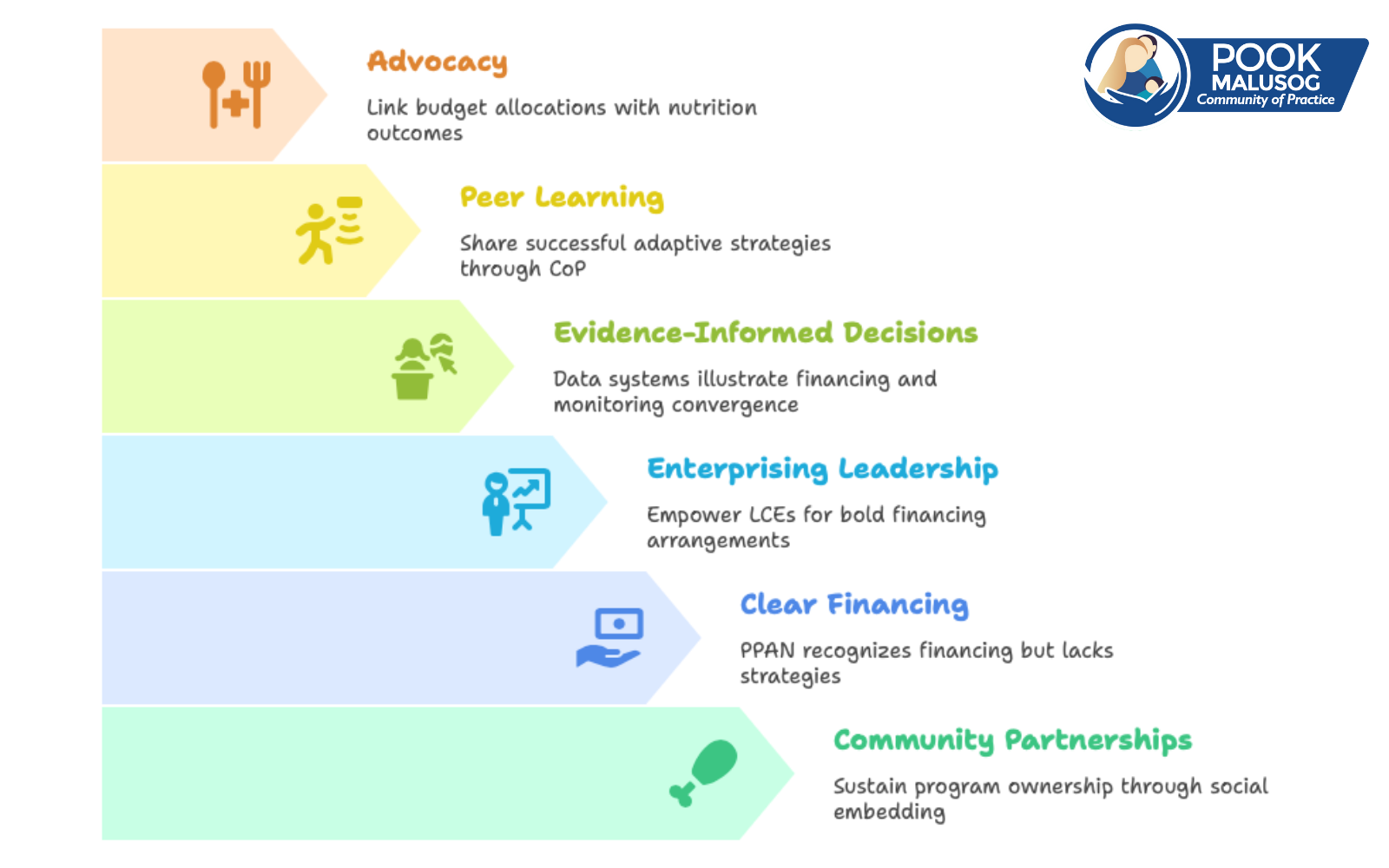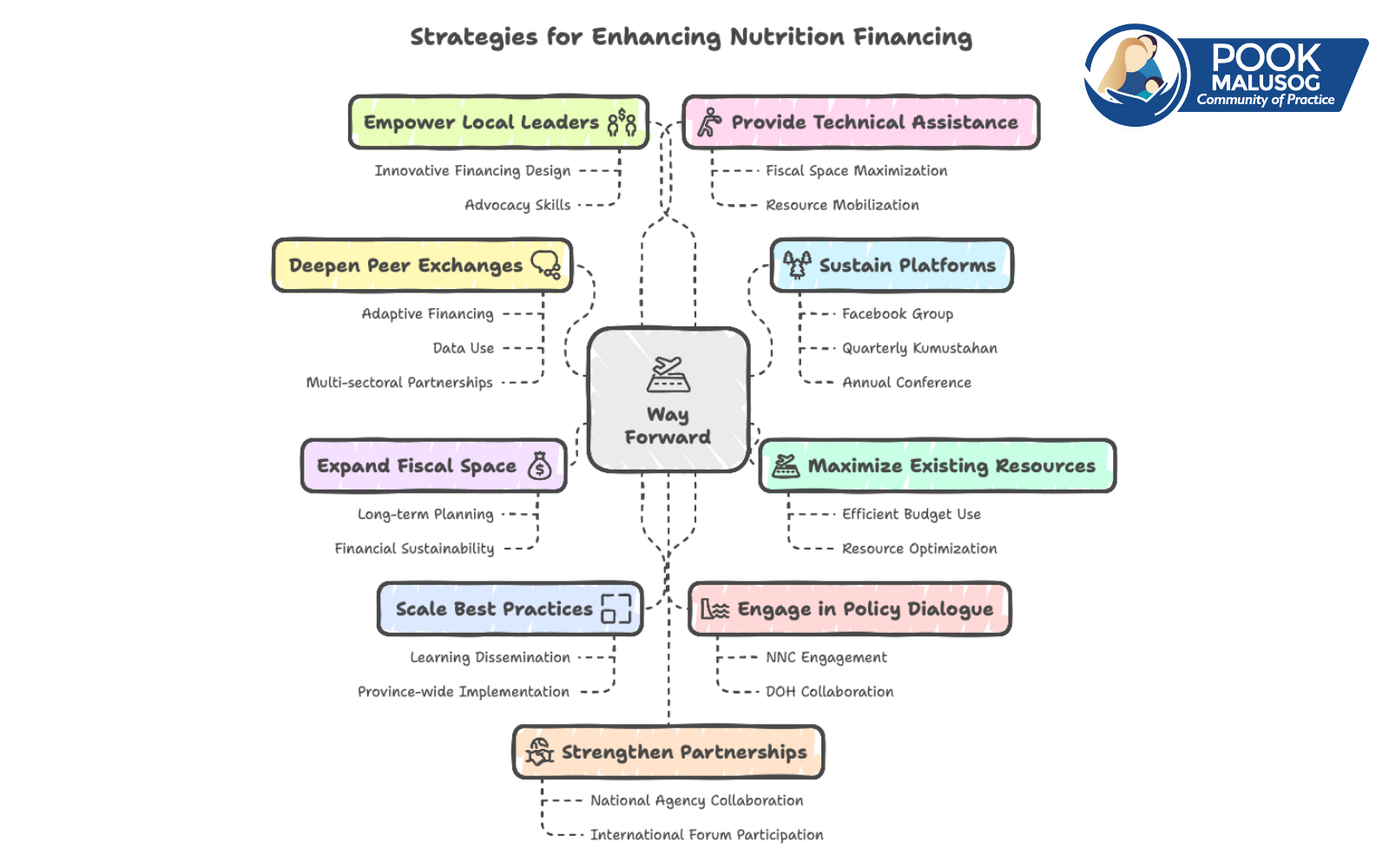Financing Nutrition: Insights from the Pook Malusog Community of Practice Session
Insights from the Field

The Zuellig Family Foundation (ZFF), through the Pook Malusog Community of Practice (CoP), gathered partners to confront one of the toughest issues in nutrition governance: financing.
Nutrition governance core teams from the provinces of Sarangani, Samar, Northern Samar, Basilan, and Zamboanga del Norte joined the webinar, together with municipal cohort graduates under these provinces. AHON Siargao municipalities and the Manila Health Department also shared their experiences from the ground.
The National Nutrition Council’s Regional Nutrition Program Coordinators and technical staff added their expertise, while consultants Dr. Esmeralda Silva-Javier and Dr. Cecilia Cristina Acuin provided evidence and analysis. ZFF Chairman Dr. Manuel Dayrit offered guidance and reflection. Their participation underscored the Community’s role as a space where local leaders, national agencies, and research partners learn and collaborate to strengthen nutrition systems.
Understanding the Financing Challenge
Dr. Silva-Javier presented findings from a ZFF Case Study on Investments for Nutrition in Sarangani and Northern Samar. The research revealed a persistent mismatch between nutrition responsibilities and the fiscal capacity of local governments. Even with higher budgets—rising from 1 million to 2.75 million pesos annually—up to 90% of Local Nutrition Action Plan activities remain unfunded. Most of the money goes to salaries, leaving little for programs, supplies, and monitoring.
Yet the study confirmed that even modest increases in spending produce measurable improvements. For instance, Northern Samar would need just 250 pesos per capita annually to cut wasting by one percentage point. Sarangani would need 204 pesos. These findings echo global evidence: well-targeted, consistent investments at the frontline can significantly reduce stunting and wasting.
The study also highlighted the role of “enterprising” local chief executives who bridge gaps through creativity and partnerships. Examples include Alabel’s Nutri-bun bakery, Kiamba’s egg distribution, and Gamay’s nutrition trust fund. While promising, Dr. Silva-Javier cautioned that these remain small-scale. Closing the financing gap will require bolder arrangements such as revenue earmarking, trust funds, and strategic purchasing.
Lessons from the Community of Practice
Discussions from the webinar brought out several key insights:
- The Community of Practice Framework Works. By centering on Purpose, People, and Practice, the Community helps LGUs sustain and expand gains through continuous learning and application.
- Critical Knobs in Action. Field stories showed how ZFF’s 8 Critical Knobs for Nutrition Governance provide a practical guide for strengthening systems, from institutionalizing nutrition staff to forging cross-sector partnerships.
- Local Innovations Matter. Enterprising leaders have piloted food processing plants, Nutri-bakeries, egg production, and trust funds, proving that creative solutions can fill gaps.
- Financing Gaps Remain. Despite local allocations, most plans remain underfunded. Evidence shows, however, that even small but steady investments pay off in nutrition outcomes.
- Other Factors Count. Socio-economic conditions, maternal education, water and sanitation, disasters, and household income also shape nutrition outcomes. This underlines the need for nutrition-sensitive programs alongside nutrition-specific ones.
Breakout group discussions shed more light on what is working and where challenges remain. Strong leadership from local chief executives, adoption of national policies, and partnerships with communities and donors emerged as effective practices. However, LGUs struggle with unclear budget guidance, limited fiscal space, and the lack of permanent positions for nutrition staff.
Participants emphasized the need for better budget-tagging tools, clearer allocation guidelines, and stronger multi-sectoral planning. They also called for peer-to-peer exchanges to spread successful innovations, from donor-supported feeding programs to local bakeries financing nutrition.
Implications for Nutrition Governance
The webinar made clear that:
- Provinces must integrate systems, while municipalities deliver services on the ground.
- Evidence-based decisions strengthen the case for nutrition in fiscal planning.
- Community ownership and partnerships keep programs sustainable.
- Clearer financing pathways and national policy guidance are essential.
- Local leaders must be empowered to design innovative financing strategies.
The Pook Malusog Community of Practice must now focus on sustaining momentum and scaling innovations. Empowering local chief executives to design and advocate new financing arrangements will be crucial, as will expanding peer-to-peer learning that highlights adaptive practices, smart data use, and cross-sectoral collaboration. Providing technical support to help LGUs maximize fiscal space and mobilize resources can ensure that nutrition programs are not only launched but also sustained over time. The Community should also act as a channel for scaling up proven practices from pioneering LGUs to more provinces and municipalities, ensuring that lessons learned do not remain isolated. Finally, engaging national agencies and policy actors is essential to institutionalize sustainable financing pathways, while maintaining spaces for local solutions to flourish.
By linking research, local innovations, and strong leadership, it demonstrates how LGUs can move from scattered efforts to collective strategies. The future of nutrition governance in the Philippines depends not only on increased funding, but also on smarter, evidence-informed, and community-driven use of resources.


